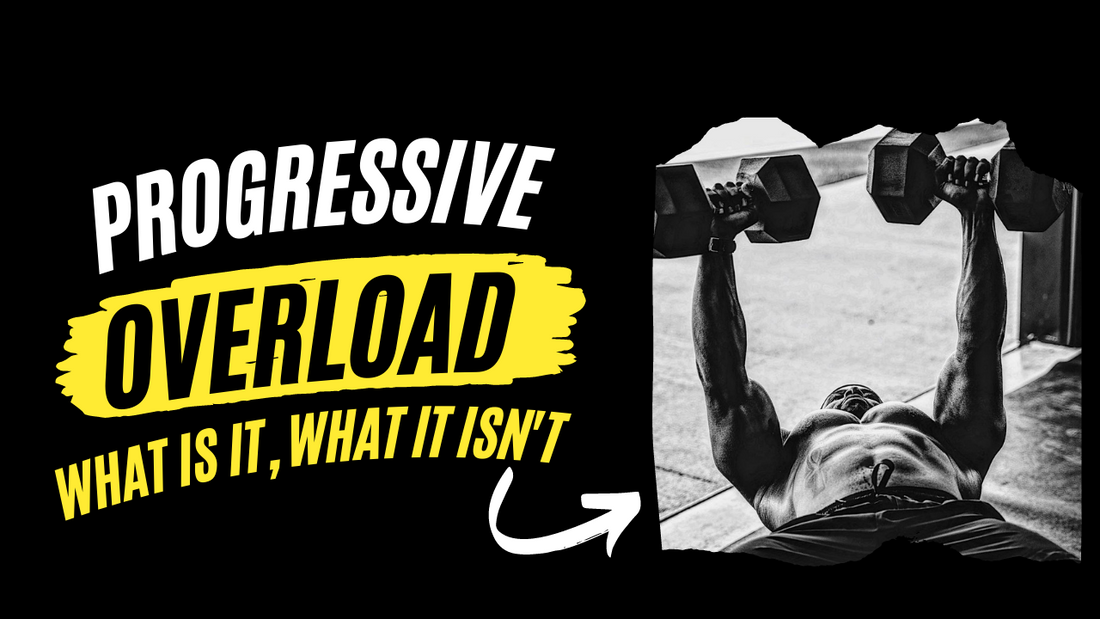
Progressive Overload: What it Actually Means
No matter the training regimen, the body will always be in some sort of adaptation. The reasoning behind this is simple; to continuously improve performance over time, training must be structured in a way that maximizes on the variables that progressively overload the muscles..But, the caveat is the body cannot adapt to something that it cannot properly recover from.
WHAT IS PROGRESSIVE OVERLOAD?
The main principle of progression looks at increases in time, weight or intensity being kept within 10% or less each week. This should in theory allow for a gradual adaptation in whatever phase you are in with your training, while also minimizing risk of injury. Without this progressive overloading parameter muscle growth will plateau, or you run the risk of overtraining when increases are to extreme.
On the other end of the spectrum, a decrease in loading over an extended period can cause muscle atrophy - a loss in skeletal muscle size and therefore strength. With consistent training the body will adapt to the progressions and meet the demands of the stress placed upon it.
3 Ways to Properly Progressive Overload Training
- Form is Key. Only when you can move weight with proper form should you increase the difficulty of the workout.
- Change one thing at a time. To avoid injuries, change the difficulty of your lifts one aspect at a time. For example, to make deadlifts more challenging, you can pull from a deficit or simply add small weight changes as the first means to overload the lift. Increasing too many variable at one time could result in more strain than your body can handle.
- Plan Your Workouts. Track everything. Before adding weight, make sure you can move your current weight for the number of reps and sets the exercise prescribes. When you can complete the reps and sets, add more weight, after this you can look to add other techniques such as pauses.
6 Progressive Overload Techniques
There are a variety of ways to change the intensity of your weight-training workouts. Some progressive overload techniques include:
- Increase the weight. The simplest, most overused way of achieving progressive overload is to lift heavier weights than the week or workout before. Make sure you can lift the new weight at the same number of repetitions as before with proper form; only when you can do that should you move onto a higher weight. For example, if you've been hitting 225 lbs on squat for the last few weeks.. The next training session, you might do 230 pounds. Based on the lift you are doing, an appropriate increase in weight would be.. 2.5 pounds, 5 pounds, or even 10 pounds.
- Increase the number of repetitions. You can add an increase in volume by doing more reps. If you are increasing the number of reps, aim to do so without sacrificing form. Beware though, you cannot add reps indefinitely since doing excessive rep ranges become monotonous. If you want to build strength, aim for a 1 to 5 rep range and occasionally try to hit your 1RM (one rep max, the maximum amount of weight you can lift for one rep). To increase muscle size, also known as muscle hypertrophy, aim for a 8 o 15 rep range.
- Complete more sets. After you increase your reps, you can then increase the number of sets to boost training volume. If you have been doing 3-4 sets, you can aim for 5 to 7 sets per lift.
- Decrease rest periods. Resting for less time between sets can help your body increase metabolic efficiency and use fat as energy to fuel your workout. Instead of taking a 3-minute rest between sets and chit chatting with your gym bro, try resting for only 1.5 minutes or less. This also helps you get in and out of the gym faster. (Resting for a couple of minutes is not recommended for heavier lifts or lifts that are close to your 1RM because it takes longer to recover when you’ve exerted yourself close to your max.)
- Change your training frequency. If there’s a muscle group that you want to focus on, you can change increase the training frequency by adding more resistance exercises that specifically target that muscle group. You can change the frequency by adding an additional day or by "microdosing" a few sets of a movement that targets the problem area, every time you workout. For example doing calf raises between sets of bench press
- Change the intensity. This is my favorite and most utilized method to do progressive overloading. A hidden gem, slowing down your lifting speed has benefits not only your fatigue but, but it also for. Novices practice increase the range of motion, or add a hold at the top or bottom of the movement. For example, if you are squatting, you can squat more slowly or pause for a few seconds at the bottom of the squat. Holds can increase the time that your muscles are under stress, which can help build endurance.